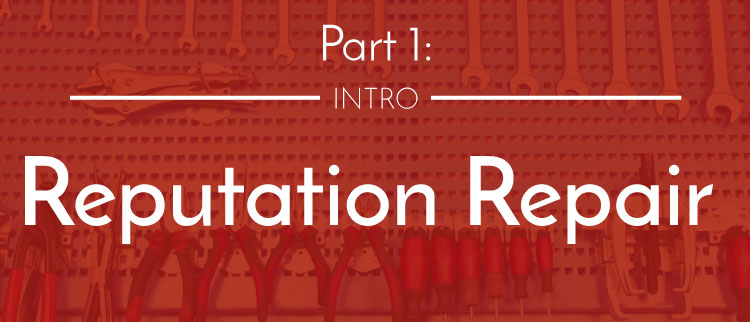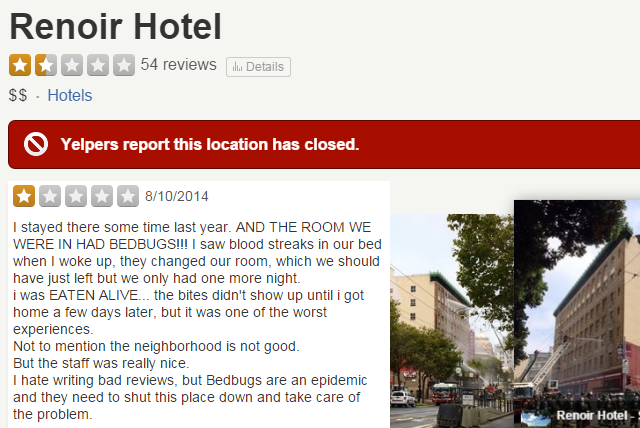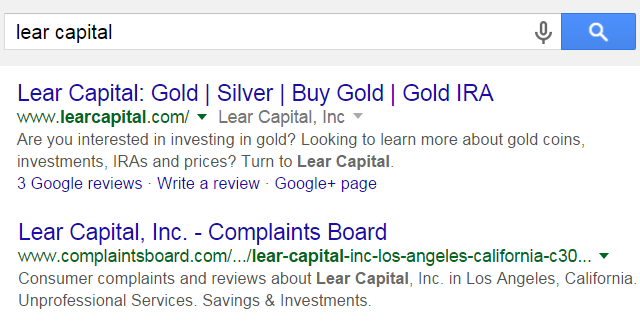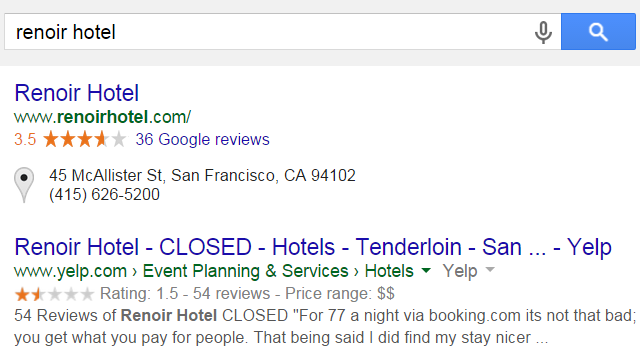How To Fix Bad Reviews – Easy Guide
It can happen when you least expect it. It’s unfortunate that it might also have a significant impact on your business. We’re referring to the dreaded poor review that gets placed online for everyone to see, or at the very least for anyone who might want to buy your services or products. In today’s post, we’ll go over some measures you may do to repair a negative review and safeguard the reputation you’ve worked so hard to establish.
A few negative Google reviews may not seem like a huge concern, but people believe what is said in reviews just as much as they believe what their friends tell them. According to Pew Research Center research, more than 80% of individuals in the United States “occasionally” check internet reviews before making a purchase choice. In addition, 40% of those polled claimed they “always” or “nearly always” read internet reviews. Therefore, it is important to have a strategy in place to address negative reviews and remove negative reviews as much as possible to improve your business’s online reputation.
So, if a company wants to see positive benefits from online engagement, it must address bad reviews and take appropriate action when genuine consumer concerns are expressed online. There are proven ways through which you can remove negative Google reviews and boost your online reputation. You can first keep reading to learn five specific approaches to increase your internet reputation.
How To Fix Bad Reviews – Step by Step Complete Working Guide
#1: DON’T PANIC! – EVALUATE THE SITUATION TO FIX A BAD REVIEW
A bad Yelp or Google review isn’t the reason for alarm. It’s easy to respond passionately to negative reviews, but this can really undermine your online reputation. Ignoring the situation is also out. There is also a school of thought that believes unfavourable reviews are excellent for public relations – the “any press is good PR” school of thought. Unfavorable reviews may also enhance purchases, according to some research. Defensive review removal is the ideal way to emphasise your company’s positives. Don’t panic if you read a bad review.
Negative feedback has been received by all companies, including Walmart, Apple, and Disney. So a negative Yelp or Google review isn’t fatal. Assess the issue first. Verify the review is real. Some competitors purposefully post fake bad reviews online. Consider this: • the nature of the complaint; • whether you have a record of the customer’s name or the situation; and Examine the complaint’s nature and language. Some fake reviews purposely omit or ambiguously state the dates of purchases or services. If the allegations are valid, you can still do something to help. We’ll go into this further later.
#2. RESPOND QUICKLY (EVEN IF FAKE) TO A POOR REVIEW
Even if a review is false, you should respond to it. Why? Because attempting to fix a negative review might be time-consuming, but ultimately worthwhile. There is no doubt that a false review will be removed. In the meanwhile, its removal might take days, weeks, or months. Therefore, err on the side of caution and begin reputation management. In addition, responding to negative reviews demonstrates to customers that you genuinely care about their issues and are not simply attempting to appease angry critics. You will gain in the long run from a reputation management approach that resolves negative reviews.
Follow these guidelines when responding to a bad review:
- 24-hour response time Avoid lengthy reason lists in your response.
- Acknowledge any valid complaints.
- Apologies that are sincere, even if the incident was not your fault.
- Propose to assist resolve the problem
The software can monitor reviews and Internet mentions so that nothing is missed. Some online reputation management technologies provide email notifications when comments and reviews are posted.
#3. IF THE REVIEW IS FAKE, CONTACT GOOGLE OR YELP TO REPORT AND DISPUTE IT. REQUEST THAT IT BE REMOVED
Yes, removing obviously bogus negative reviews creates some difficulties. However, if you follow specific procedures, you will have a greater chance of convincing a review site to delete bogus reviews. If you want to edit a negative review on Google or Yelp, the process is essentially same. Start by marking the review as fake or reporting it as such. Open Google Maps, search for your business, and look at your reviews to identify those that are suspicious or obviously fabricated.
Click the “Flag as Inappropriate” button next to the review you wish to report as inappropriate. If you do not receive a fast answer from Google, you have two more options:
- Phone Google: Go to the Support prompt on your Google My Business page to obtain the phone number to call Google to inquire about the status of the flagged review.
- • Seek legal recourse: If the false review is really harmful to your organisation, you can utilise the Google form to request legal removal. Be advised that the requirements for this stage are somewhat stringent, so you may wish to check with an attorney. If you discover a fake or defamatory review on Yelp, you may report it, and Yelp moderators will endeavour to independently verify your allegation that the review was not written by a real customer.
- Similar to Google, it is feasible to take legal action to delete a fraudulent Yelp review. Yelp has a propensity for allowing “Yelpers” to stand behind their reviews, despite its professed position of neutrality in such situations.
However, they do employ automation to identify which reviews are the most helpful. Therefore, it is very feasible that problematic Yelp reviews will never be published. Obviously, you still need to monitor what is really uploaded. Additionally, Yelp encourages business owners to utilise their account to reply publicly or personally to inaccurate ratings.
#4. RECTIFY THE SITUATION IF IT’S A VALID CONCERN AND STAY ON TOP OF NEGATIVE REVIEWS
Keep an eye on your online reputation. Check back to see how your claim for potentially fake reviews is progressing. Sometimes a client will write a bad review or exaggerate a little issue. In this scenario, a timely and courteous response from you may help. If you keep getting bad evaluations, you should be honest and admit that you’re probably missing something. Some business habits may be difficult to change. However, it may significantly improve your online feedback. To improve your company’s online reputation, you may need to:
- Train your customer service employees
- Editing web content
- Terminating an employee who mistreats customers
- Creating and enforcing a negative comment policy Consider focusing on reviews that originate from inadvertent mistakes on your part, rather than from general corporate practises. You should not try to have evaluations like this erased, regardless of the nature of any reasonable criticism that mayinclude When dealing with real consumer concerns, you can do things like:
- Refund or exchange
- Repetition of service till 100% satisfaction
- Offering future purchase discounts
- Taking the conversation offline through text or phone You may be able to persuade a dissatisfied customer to change, delete, or alter their unfavourable review.
For example, if a customer was displeased with a service and you sent a technician back to fix it for free, the customer may change their rating. You may need to gently nudge them, but most decent consumers are willing to accept a resolution. Consumers frequently update their ratings or reviews after a genuine effort to fix a problem has been made. If the site does not allow people to remove unfavourable reviews, they may just post a new review praising your response.
#5. WORK TO ACQUIRE POSITIVE REVIEWS MORE ACTIVELY TO HELP OFFSET ANY NEGATIVE ONES
One overlooked technique to remedy a poor review is to aggressively encourage people to create fresh evaluations. This is to make up for any negative reviews or remarks. Also, individuals prefer to value fresh ratings above older reviews. Customers are more likely to be affected by current evaluations than older ones. One of the greatest methods to acquire online feedback is to make it as simple as possible for consumers to leave comments.
Here are some simple and successful methods:
- Optimizing your review profiles on review sites to help fresh reviews rank highly on search engines
- Claim your Google My Business page (if you haven’t already) to boost good ratings.
- Sending follow-up emails to consumers with a link to your review page or profiles on review sites
- Teach your personnel to ask for evaluations following a transaction.
- Spending more time on social media so pleased consumers will promote your business positively.
- Discounts and other benefits for reviews
Use caution, as you want most of your evaluations to be honest and unrelated to your business. Some platforms also prohibit this method. Proactively maintaining your reputation will help you remain on top of poor reviews. Our staff can assist you cope with bothersome bad Yelp reviews or doubtful Google reviews. We’re ready to help you improve a bad review, minimise negative feedback, increase good feedback, and highlight your brand’s strengths. To learn more, contact us immediately.
How to Repair a Bad Online Reputation – Example
This tutorial will assist you in resolving the three most prevalent online reputation issues: negative reviews, negative search results, and social media errors. Who Should Read This Information? 
This online reputation restoration advice is tailored to high-profile individuals and businesses that have been negatively damaged by negative reviews and search results. How Do Bad Reviews Appear? A poor review is negative feedback that generally results in a one-star rating that appears when someone looks for you or your firm in a directory such as Yelp or a professional directory such as Health Grades. Here’s an example of a hotel with several Yelp complaints. It’s simple to see why they went out of business after reading this review.

What Appear Negative Search Engine Results?
A negative search engine result is an unfavourable complaint or negative review that appears when someone searches for you or your business on Google or other search engines. Here is an example of a financial services firm whose website has a complaint. Every month, thousands of people experience this negative effect.

How Harmful are Poor Ratings? Why Is Your Reputation Online Important?
As a means of providing context: Consider for a moment that you wish to start a retirement account in which you intend to invest your whole life’s savings. You conduct a Google search for “best retirement account” and our illustrative business appears. To obtain further information, go visit their website. You are prepared to establish an account once a few days have passed. This time, though, you find this complaint page when you search for the company’s name. You can’t help but click the unfavourable result, whether out of a sense of responsibility or just curiosity. It cannot be resisted.
The article you read altered your viewpoint in a matter of minutes. You no longer have faith in the company you were willing to entrust with managing all of your funds. It’s possible that they’re not a terrible business, but it’s too hazardous to operate with them. If you or your organisation have a poor internet image, prospective clients will do the same.
Thankfully, Some Evaluations Can Be Corrected In the case of a number of review websites, the issue can be rectified by acquiring more positiveștiiștii.știi. Consequently, the star rating will grow, and a bad search result might turn favourable. Later, we’ll consider potential solutions.

The main difficulty most people and businesses face is negative search results generated by news, blog, and complaint sites, which cannot be fixed by gaining new favourable reviews. It’s often an editorial article when the writer is only told to report the news or make up a story.
How Bad Is Your Online Reputation?
This will happen if you Google your name or the name of your firm and the top page has harmful stuff. In the best case situation, the consumer will avoid you. Worst case, they’ll tell everyone they know. In the internet era, everyone has a voice, which is good. However, it permits anyone who has a problem with you to air it publicly. A minor mistake turned into a significant issue for several business owners.
Others may have broken the law or been sued, but they fixed the issue and moved on. Others regard it as a bad news cycle. That problem can cost your firm thousands, if not millions, of dollars every year. If someone Googles your company name and discovers nasty articles on the first page, especially in the top five, your reputation is harmed.
What Dangerous Data Is Available?
Each one is unique. The content available online depends on what happened, how big your company is, and how much your customers spend. A law firm’s concern for court papers, news stories, press releases, mugshots, and arrest records. You can find negative reviews, ripoff reports, BBB complaints, scam advisor reports, videos, and even whole websites maintained by people who were wronged (intentionally or not).
Business owners and board members may face mugshots, bad press, and embarrassing photos. While each case is unique, the issue is universal. These reports may discourage a potential or present consumer from doing business with you. Not just because they were tricked, but also to avoid such scenarios.
Do I Need Reputation Repair?
It’s hard to say, but if you Google your business and discover negative results, chances are your current and future clients will too. If this doesn’t bother you, don’t do anything. To be sure, the repercussions are obvious to most business owners. To be secure, many clients will choose another business even if the information given is untrue. Reviews are vital: 92% of consumers utilise them to make purchases (BrightLocal).
It’s great to have a few good ratings, but unfavourable online reviews are part of running a business. Because 44% of consumers feel reviews older than a month are useless, you must respond to all reviews immediately. This may help mitigate the impact of unfavourable reviews. Negative reviews can affect your online reputation, so learning how to respond to them and recover your online reputation is vital.
Positive ratings of a business are encouraged and rarely cause issues. But here’s the twist: progress requires feedback, which reviews provide. Negative customer feedback is often more helpful than good comments. Take constructive criticism. Even though they grumble, they still talk to you. Customer loyalty is only demonstrated through unfavourable internet reviews. Likewise for them. Examine customer reviews thoroughly to discover flaws. This makes it difficult to determine the root cause of the issue. “Worst service” and “terrible quality” are powerful yet ambiguous.
You may need to personally ask the consumer what’s going on. Once you know what the issue is, you can repair it. Remember that consumers who leave unfavourable reviews do so because they believe they have a valid reason. This suggests they were convinced they were correct even if they weren’t. If you can identify it, you can address it, improve your business, and avoid damage to your reputation. Clarify any misunderstandings to avoid future confusion among potential consumers.
How do I fix a bad review that can’t be taken down?
Online reviews are very important to the reputation of a business. A good review will give your business more credibility and trustworthiness, but a bad review can stop someone from buying from you. When making a purchase decision, 97 percent of people read reviews of local businesses and online reviews. Even though businesses would love to only get good reviews, it doesn’t always work out that way.
So, what happens when you want to get rid of a review of your brand? You can’t avoid comments that aren’t relevant, content that isn’t appropriate, or fake reviews. If you see these kinds of reviews on your brand page or when people look for your company on Google, you can ask for them to be taken down. But this can take a long time, and you might lose thousands of customers or potential customers in the meantime. Here are a few ways your brand can handle Google reviews that can’t be taken down in a professional way.
Talk about the review.
Even if the review is bad, you should answer it. Talk about the customer’s experience and ask if there are any ways you can make the whole thing better. Responding to all reviews shows that your brand cares about what customers think about it and how they feel about their experiences with it. It also shows that when you make a mistake, you can own up to it and figure out how to get better.
Ask people to take down their reviews.
Even if a customer’s problem is solved, they might forget to take down their negative reviews. Ask the customer politely and professionally to delete their review if they think the matter is over. If the customer has more questions, make sure to ask them in private and be patient.
Try to solve problems.
When customers are unhappy with a brand, they write bad reviews. It’s important that your customers feel heard and appreciated. Ask them what happened and if there is anything you can do to help them out. Even if you can’t solve every problem or reach every customer, it shows that your brand cares about its customers and boosts your brand’s reputation. If you want to do a better job of managing your online reviews and reputation, you can get help from us right now.



